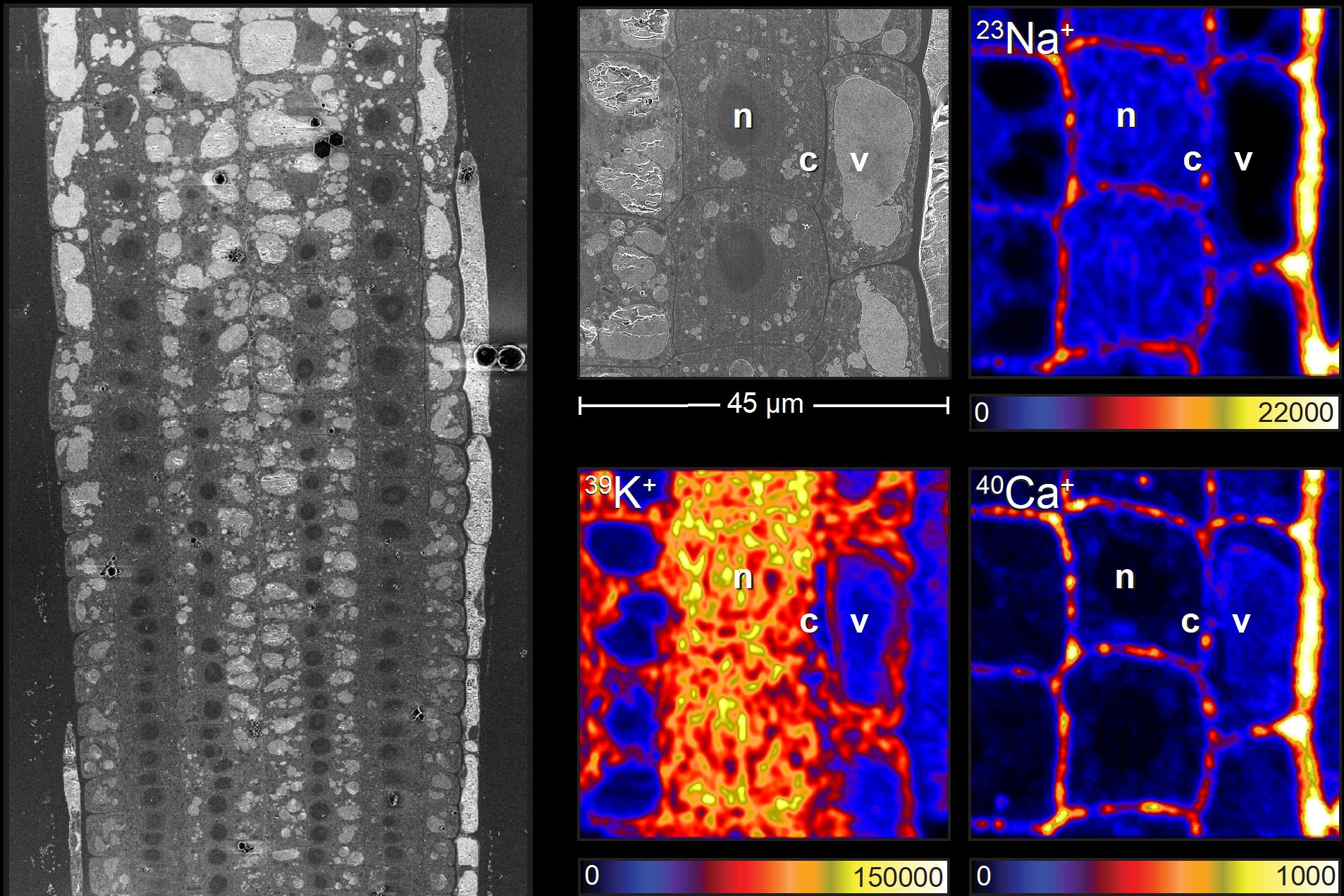A research team from the IBVF has participated in an international study that has applied a new microscopy technique that has allowed them to observe at a cellular level how plants protect themselves against excess sodium. The work, published in the journal Nature, has described the function of a key plant protein in the tolerance of plants to high salinity, which is a fundamental discovery for studying possible biotechnological solutions to the growing problem of excessive amounts of salt in crop soils, caused by the expansion of irrigation systems and an increasingly dry climate. “The study was made possible by combining an innovative microscopy technique that allows elemental analysis with subcellular resolution, called CryoNanoSIMS (Cryo Nanoscale Secondary Ion Mass Spectrometry) developed in Switzerland, and the fine analysis of the subcellular distribution of the SOS1 protein, the subject of this study, carried out by CSIC researchers,” explains Priya Ramakrishna, principal investigator of the study, attached to the Ecole Polytechnique Fédérale de Lausanne and the University of Lausanne.
In addition to the Centre for Plant Biotechnology and Genomics (CBGP) and the Institute of Plant Biochemistry and Photosynthesis (IBVF), both of the CSIC, several Swiss institutions participated: the Federal Polytechnic School of Lausanne, the University of Lausanne and the ETH Zurich.
SOS1, the key protein
Irrigation water contains small amounts of salts that are deposited in the upper layers of the soil and accumulate after the water evaporates. Among these salts, sodium ions stand out due to their toxic potential when competing with potassium ions, which is an essential macronutrient.
“The CSIC researchers participating in this study had already demonstrated that the plant protein called SOS1 acts specifically in the transport of sodium through biological membranes. The known function of SOS1 is the expulsion of sodium accumulated in the cells, both back to the soil and for its distribution between the different organs of the plant through the conductive system,” explains CSIC researcher at the IBVF José M. Pardo.
Another fundamental mechanism for tolerance to salinity is the sequestration of sodium ions in cellular compartments called vacuoles, where the cell is capable of storing large quantities of salts and avoiding the poisoning of essential biochemical processes. However, the proteins responsible for the vacuolar accumulation of sodium had not been able to be identified. “Now, with this work we have shown that SOS1 is also essential for this process, especially in poorly differentiated tissues where an effective conductive system to evacuate accumulated sodium has not yet been formed,” says Francisco Gámez-Arjona, a CSIC researcher at the IBVF.
“This finding reinforces the already known importance of the SOS1 protein in the salt tolerance of plants and opens new avenues for its biotechnological exploitation,” explains Francisco J. Quintero, director of the study at the IBVF. “Now new avenues of research are opening up to understand how the targeting of SOS1 to the plasma membrane or to the vacuolar membrane is controlled, and also to explore how this new function of SOS1 can be used to increase the detoxifying capacity of plants subjected to salt stress,” he adds.
“This work is a magnificent example of cross-fertilization between disciplines, because it was necessary to wait for a new development in the capacity for mineral analysis in the different cellular compartments in order to be able to demonstrate the function of SOS1 in sodium transport in vacuoles,” says Clara Sánchez, a CSIC researcher at CBGP.
Ramakrishna, P., Gámez-Arjona, F.M., Bellani, E. et al. Elemental cryo-imaging reveals SOS1-dependent vacuolar sodium accumulation. Nature (2025). DOI: https://doi.org/10.1038/s41586-024-08403-y



